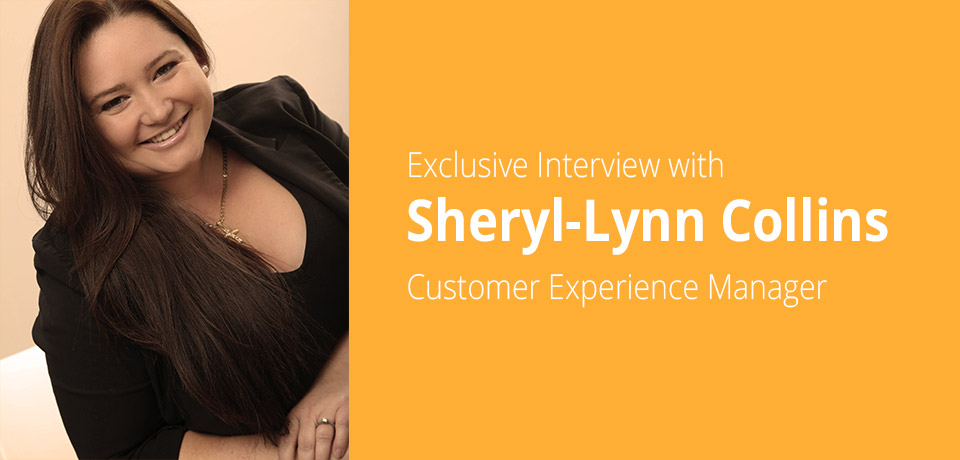
In this issue of eMarketing Insight, we interview our email marketing customer experience manager, Sheryl-Lynn Collins on the topic of email marketing campaigns and landing pages…
Sheryl-Lynn has been in the digital communications industry for 8 years and specializes in email. She gave us some great advice in a recent interview…
Q: Why are landing pages so important for email marketing?
A: Email continues be to one of the top online channels that drives purchases. A good landing page can take the customer further down the purchase path, educate and provide them with more information, in a more interactive way than the email.
Landing pages provide an opportunity to make the presentation layer of your content fun, interactive and informative. Hover spots, easy price comparisons and various color views assist with a purchase decision. Functionality that is not possible in an email
Q: What is your all-important best practice tip for landing pages?
A: Mobile first, mobile optimized – I know it sounds like I’m just throwing out a buzzword, but I really believe that it’s a non-negotiable for landing pages. Here are some cool stats from Yesmail Interactive to back me up:”
- Mobile conversion rates (purchases resulting from an email click) grew by 70%, while desktop conversion rates dropped by 4%;

- Mobile revenues comprised one-fifth of all email-generated revenue, up by one-third from a year earlier;

- The share of orders completed on a mobile device increased by 21% to almost one-quarter of all email-generated orders;

- Mobile’s average order value (AOV) grew by 28%, twice the rate of growth for desktop AOV.

Q: Is ‘the fold’ something you should consider for landing pages?
A: Yes, but I subscribe to the idea of relevance over attention, so I believe that if the content is relevant, the user will scroll.
Q: Do you then suggest that all email marketing campaigns should have a campaign landing page?
A: No, not necessarily it depends on a host of factors like:
- The goal of the email
- User experience
- Costs
- Personalization requirements
- Time constraints
There is more than one type of landing page. So, based on the factors I just mentioned, marketers can choose to link to either a landing page on their website, a custom campaign page, or create a microsite.
Q: Can you explain the differences between a website landing page and a custom campaign landing page?
A: A website landing page is just a link through to an existing web page on the company website.
A custom campaign landing page is created specifically for the campaign; the information is relevant and targeted. This page can be hosted by an ESP or as a new temporary page hosted on the company website. Both have pros and cons.
Website landing page:
Pros
- No additional hosting or development costs
- No development and testing time needed as the page exists
Cons
- The usability and navigation could be based on designs when the website was first created, so the user might get lost or have problems finding relevant information. An example I come across often is financial institution websites, they are packed with reels and reels of copy and information that can be confusing and difficult to read
- Personalization and customization is not possible
Custom campaign landing page:
Pros
- You have control over layout, design and UX – flexibility that is not available with the company website flexibility that is not available with the company website
- Making sure the single page is responsive, is not nearly as costly as re-designing an entire website
- With help from the ESP, the landing page can be customized and personalized
Cons
- There are additional hosting and development costs
- Development and testing time is needed, as the page must be spec’d, designed, developed and tested.
Q: What should marketers consider when deciding between a customer landing page or a microsite?
A: A microsite is separate digital real estate within a particular ecosystem, designed to support the overall campaign content. A microsite will have its own domain or subdomain. A mini website built around a specific, single message and call to action.
The decision to go with either a custom landing page or a microsite will be based on the content management strategy, the format and amount of content, as well as the length of the campaign. Is there content that can support and compliment the commerce? Can content be generated using the microsite? What is the lifespan of this campaign?
Microsites are expensive to develop and it will mean managing and paying for another digital presence. So, consider all the factors beforehand.
Q: Thanks for your time. Are you working on anything interesting at the moment? What can we expect to see or hear about soon?
A: Thank you! Yes, I have been involved with some really innovative stuff on the eBilling side of the business, as a global leader in secure electronic customer communications, we are always pushing boundaries. But it’s all hush, hush for now! A live demo will be available soon. Exciting times ahead for Striata.
Did you enjoy this communication?
Be sure to follow Sheryl-Lynn Collins on LinkedIn and Twitter
%
Landing Page Statistic
68% of B2B businesses use landing pages to garner a new sales lead for future conversion.
Improve the customer experience with secure document delivery today



